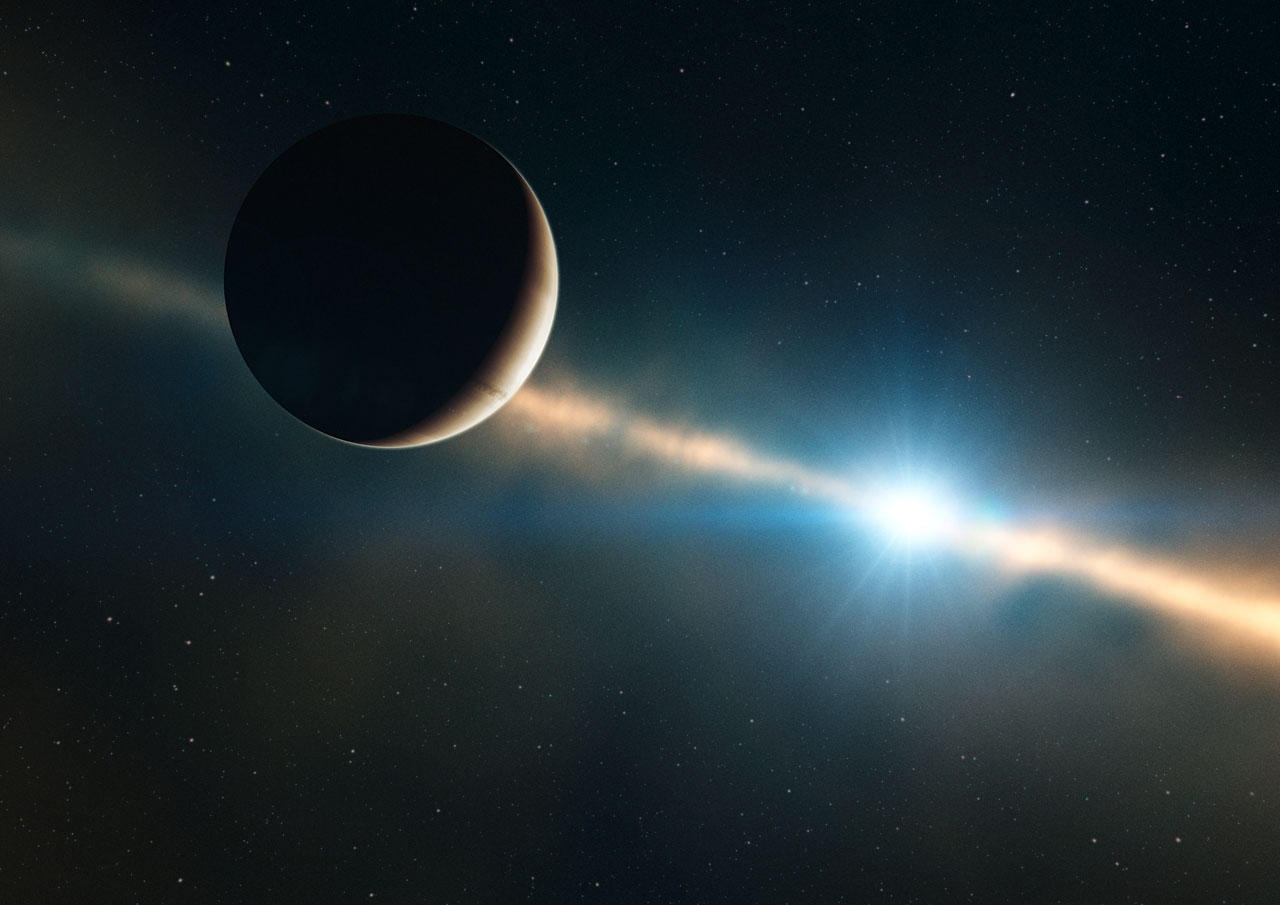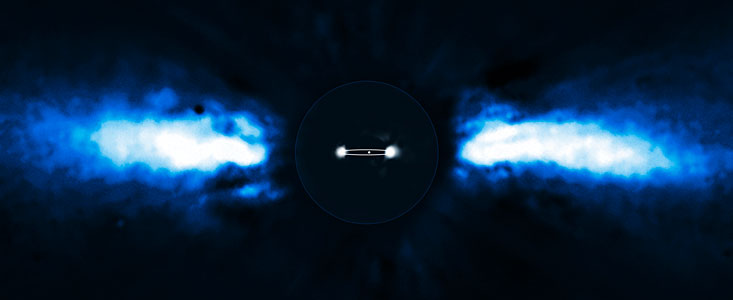Beta Pictoris b orbits the young star Beta Pictoris in an orbit similar to that of Saturn, the novelty of the system is that it is the closest planet to its sun that has been physically photographed, and that its sun is barely 12 million years old
Nancy Atkinson

For the first time, astronomers were able to directly track the motion of an extrasolar planet as it moved from one side of its sun to the other. The planet has the shortest orbit of those that have been photographed so far directly (and these are precisely the planets farthest from their suns). It lies in a similar orbit to that of Saturn from our Sun. The star, Beta Pictoris is only 12 million years old, and therefore this planet indicates that the giant planets can form quickly - only within a few million years within the pre-planetary disk. The experts say that this discovery confirms the theory that unique structures in the disks can be used as a kind of fingerprints to characterize the planets.
The star itself, Beta Pictoris is 75% more massive than our Sun. It is about 60 light years away in the direction of the Pictor group. This is one of the known examples of a star surrounded by a disk of dust. Previous observations have shown disc deformation, a secondary disc and comets falling into the star.
"These discoveries were indirect, but strong enough to require the existence of a massive planet, our new observations have proved it beyond doubt" said team leader Anne Marie LaGrange. "Because the star is so young, our results prove that gas giants can form from the disk within a few million years.
The planet known as Beta Pictoris b was suspected to be observed in 2003 and was photographed for the first time in 2008, but the astronomers cannot determine that it is indeed a planet and not actually in the foreground or background. The new observations indicate that the object is indeed a gas giant surrounding the star.
Recent observations have shown that disks around young stars dissipate within a few million years and that the gaseous planets must have formed faster than previously thought.
So far only about ten planets have been photographed. Beta Pictoris b has the shortest orbit known so far. It is located at a distance between 8 and 15 times the distance between Earth and the Sun or 8-15 AU, roughly the distance of Saturn from the Sun.

The short orbital period of the planet will allow us to record its complete orbit for 15-20 years, and further studies of the planet will give us further insights into the physics and chemistry of the atmosphere of a young giant planet. said research student Michael Bonfoy.
The planet has a mass 9 times that of Jupiter and this is the correct mass and position to explain the disturbances in the observations of the inner part of the disk. This discovery shows similar signs to the prediction that the astronomers Adamas and La Vreya discovered Neptune (Rahab) in the 19th century, based on observations of the orbit of Uranus (Oron).
The team used the NAOS-CONICA instrument located on one of the 8.2-meter telescopes of the European Southern Observatory VLT in Chile. These recent observations made in the fall of 2009 revealed that the object is on the other side of the disk compared to its position in 2008, and after a period of hiding behind or in front of the star (even if it is in front it is lost in the star's glow). This confirms the fact that the source is indeed a planet orbiting the parent star. It also provides insights into its size and orbit around the star.
Together with planets discovered around other young massive stars (Pumelhot and HR8799), the existence of Beta Pictoris b suggests that super Jupiters can be a frequent byproduct of the process of planet formation around massive stars," said team member Gal Chaubin. "The direct images of exoplanets - many of which have been taken by the VLT - show the diversity of planetary systems," said Lagrange. "Among these, Beta Pictoris b is one of the most promising cases of planets that could have formed in the same way as the gas giants in our solar system were formed.
For information on the European Southern Observatory ESO website
Translation: Avi Blizovsky

2 תגובות
This is the first time I hear that there is a picture of a planet outside the sun's orbit.
Can you explain a little about the picture? Where is the planet, and what is the blue around.
Thanks
I understand that the article was originally written in English and the website team worked to translate it into Hebrew, for which I am grateful.
But there are a lot of errors that are worth noting in further reading before publishing!
If you have already invested the time in translating an article, can't you read it one more time before publishing it?!
It really impairs the pleasure of reading!
good evening!